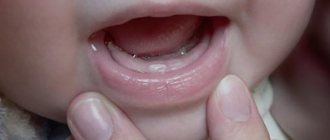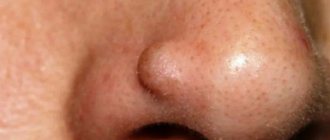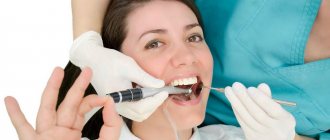Damage to the maxillary sinuses - studying the causes
Most often, injury occurs in the area of the bottom of the sinus, since the roots of the molars and premolars are located quite close to it, and in some people they are located directly in the maxillary sinus, protected from them only by the mucous membrane. In some cases, the cause of bone thinning is the presence of acute and chronic diseases, such as cysts, periodontitis, periodontitis. All this can cause injury, even if the doctor did not violate any rules of dental treatment and did not apply traumatic pressure.
Damage to the maxillary sinuses is always associated with some of the dental interventions:
- removal of a cyst on the root of a tooth;
- dental implantation;
- endodontic treatment;
- removal of a tooth.
Perforation of the maxillary sinus during cyst removal occurs due to medical errors - ignorance of the exact size of the bone plate that separates its bottom from the walls of the resulting cyst, as well as in cases of a large volume of jaw bone tissue. The same reason for perforation is observed in the case of installing an implant, filling canals or inserting pins.
When carrying out endodontic treatment, in the case of greater than necessary expansion of the canals, as well as the use of brute force when installing pins, filling materials may penetrate into the maxillary cavity. When a tooth is removed, the cause of perforation can be both the anatomical features of the patient and the forceful pressure of the doctor.
Causes of bleeding during sinusitis
If you have snot that does not go away for a long time, you should consult a doctor. There are several degrees of the disease, by which the stage of sinusitis can be determined:
- white snot appears first;
- green and yellow snot indicates the development of inflammation in the sinuses;
- the appearance of snot streaked with blood means a severe form of the disease.
There are many reasons why bloody discharge appears. The most common are:
- Long-term use of nasal drops.
- Frequent nose blowing and damage to the capillaries in the nasal passages.
- Fragile vessels.
- Fracture of the bridge of the nose.
- Acute sinusitis, when there are pathologies in the tissues.
- Lack of vitamin C in the body.
Bleeding may cause damage to the sinuses and accumulation of mucus in them.
In people suffering from sinusitis, the nose swells in the morning, and when you first blow your nose, streaks of blood appear. In this case, you should immediately contact a medical facility. With timely treatment in the form of rinsing the nasal passages and using medications, sinusitis goes away without complications.
When the mucous membranes of the nose dry out, snot with blood streaks may appear. In this case, it is necessary to moisten them with saline solution or Aquamaris. Doctors do not recommend blowing your nose with great effort. If it is difficult to breathe, you can carefully suck out the secretions with a baby nozzle ejector or a bulb without injuring the nasal passages.
Our team of doctors
Maxillofacial surgeon, Implantologist
Bocharov Maxim Viktorovich
Experience: 11 years
Dental surgeon, Implantologist
Chernov Dmitry Anatolievich
Experience: 29 years
Orthopedist, Neuromuscular dentist
Stepanov Andrey Vasilievich
Experience: 22 years
Endodontist, Therapist
Skalet Yana Alexandrovna
Experience: 22 years
Orthopedic dentist
Tsoi Sergey Konstantinovich
Experience: 19 years
Dentist-orthodontist
Enikeeva Anna Stanislavovna
Experience: 3 years
Treatment of sinusitis with nasal rinsing
Diagnosis of sinusitis
The reason for taking measures to diagnose sinusitis is the patient’s complaints about the symptoms of the disease.
Before the examination, the otolaryngologist interviews the visitor and conducts an instrumental examination. Methods for diagnosing sinusitis:
- Endoscopy. Examination of the nasal sinuses using a miniature camera inserted through the respiratory tract. Allows you to examine the condition of the mucous membrane in places inaccessible to the naked eye.
- X-ray. The procedure allows you to assess the condition of bones and soft tissues with high accuracy. Shows fluid accumulation and swelling.
- CT scan. Prescribed in cases where accurate detailed information is needed to make a diagnosis and prescribe treatment for sinusitis.
- Puncture. Puncture of the nose to obtain biomaterial and conduct bacteriological research. It may be required if treatment is ineffective and in a number of other cases.
Methods for diagnosing sinusitis are determined by the doctor on an individual basis.
Treatment of sinus inflammation
Today, there are several ways to treat sinusitis. It is important that the appointment is made by an experienced ENT doctor. Since the same methods show different effectiveness for certain types and stages of the disease and in some cases can do more harm than good.
Main types of therapy:
- medicinal;
- physiotherapy;
- folk
Separately, it is worth highlighting the procedure for rinsing the nose for sinusitis. It is suitable for any form of disease, has virtually no side effects and shows excellent results in combination with other methods. In especially severe cases, sinusitis is treated with surgery - sinus puncture or puncture, endoscopic sinus surgery.
Drug treatment of the disease
Various medications and drugs are widely used in the treatment of sinusitis. They are prescribed both to eliminate symptoms and alleviate the patient’s condition, and to influence the cause of inflammation. They can be used independently or in combination with procedures.
The main groups of drugs for the treatment of sinusitis:
- Decongestant nasal sprays. Promotes easier breathing and better removal of mucous secretions.
- Antibiotics. Prescribed for the treatment of purulent sinusitis and the development of bacterial infection.
- Hormonal agents. Glucocorticoids are highly effective in cases where sinusitis is caused by allergies.
Medicines must be prescribed by a doctor. Catarrhal, purulent, mixed sinusitis require different treatments. In addition, when choosing medications, the otolaryngologist takes into account the patient’s condition and many other factors.
Nasal rinsing for sinusitis
Nasal rinsing is one of the most effective procedures in the treatment of sinusitis. If you follow the rules, it is safe and brings relief within a few minutes. The essence of rinsing is the introduction of drugs through a nostril, followed by their movement in the sinuses and removal through the other nostril.
Thanks to the washing procedure:
- mucus and pathogens are removed;
- the nasal passages are washed and breathing becomes easier;
- sinuses are treated with medications;
- the likelihood of complications is reduced;
- the inflammatory process decreases.
Nasal rinsing for sinusitis under the supervision of a doctor can be done even for children. In clinics, the Proetz (cuckoo) method is used for this. It helps both in the initial stages of sinusitis and after complications of the disease appear. At home, a water-salt solution is used. For sinusitis, rinsing is done by inhaling liquid from the palm of your hand.
Inhalation with a nebulizer
Nebulizer inhalations for sinusitis are used along with nasal rinsing. This is a hardware method based on the principles of air aeration. During the procedure, the patient inhales evaporated air containing the drug.
Features of treating sinusitis with a nebulizer:
- simplicity and convenience;
- safety and painlessness of the procedure;
- penetration of the drug into the sinuses;
- impact on the cause of the disease;
- rapid relief of sinusitis symptoms;
- removal of edema.
The use of a nebulizer is possible at home, both in complex therapy and for prevention. If you have sinusitis, you should consult a doctor so that he can prescribe a medication suitable for the procedure and rule out complications of the disease.
Features of treatment of sinusitis during pregnancy
During pregnancy, women have an increased risk of developing sinusitis. This occurs due to increased stress on the immune system and hormonal changes. At the same time, sinusitis is dangerous due to fetal hypoxia and various complications, and treatment methods are limited.
Pregnant women are recommended:
- contact the clinic when the first symptoms appear;
- carry out procedures for rinsing the sinuses;
- use a nebulizer.
Treatment of sinusitis during pregnancy must be carried out by a doctor to avoid complications. Diagnosis is usually limited to instrumental examination - rhinoscopy. Puncture under local anesthesia and gentle antibiotic therapy for sinusitis are possible.
Prevention of sinusitis
Prevention allows you to avoid sinusitis and possible complications of this disease.
Effective proven measures:
- prevention and proper treatment of colds;
- strengthening immunity and hardening;
- performing hygiene procedures - washing hands, ventilating the room, etc.;
- annual flu vaccination;
- rinsing the sinuses with pharmaceutical solutions or folk remedies.
If time for prevention has already been missed and the first symptoms of sinusitis appear, you need to contact an ENT clinic. In the initial stages, you can cope with the disease in a short time and at minimal cost.
Treatment at the ENT clinic
In Kemerovo, fast, qualified care for sinusitis and its complications can be obtained at the Euromed ENT clinic.
We provide a full range of services:
- appointment with an otolaryngologist;
- diagnostics using advanced methods;
- treatment of sinusitis;
- nasal rinsing according to Proetz;
- carrying out physiotherapeutic procedures;
- puncture and surgery.
More detailed information about the work of the clinic, otolaryngologists, procedures performed for sinusitis and their cost is available on the EUROMED website. Here you can see patient reviews.
Symptoms of perforation of the maxillary sinuses
Damage to the maxillary sinuses during tooth extraction can be diagnosed if the patient has:
- blood with air bubbles released from the tooth socket;
- the appearance of blood from the nose on the side of removal;
- the appearance of “nasality” in the voice.
If this damage occurred during endodontic treatment or implantation, the doctor can diagnose it based on the following signs:
- failure of an instrument or implant into a tooth socket;
- the appearance of air bubbles in the blood;
- changing the position of the instrument when working in a wound.
Inflammation of the sinuses: diagnosis and treatment
Depending on the location, sinusitis can be:
- maxillary;
- ethmoiditis (inflammation of the mucous membrane of the cells of the ethmoid labyrinth);
- frontal sinusitis (inflammation of the frontal sinus);
- sphenoiditis (inflammation of the sphenoid sinus)
If the inflammatory process affects everything, then it is diagnosed as acute pansinusitis. If inflammation affects one half of the head (right or left frontal and maxillary sinuses), then this condition is called hemisinusitis. If more than one, but not all, paranasal sinuses are inflamed, then this process is called polysinusitis (poly - from the word many).
Consequences and prevention of injury
This complication, if left untreated, can lead to:
- inflammation of the maxillary sinus;
- infection of surrounding bone tissues with transition to other sinuses of the skull;
- formation of foci of osteomyelitis in the upper jaw;
- suppuration of foci of infection;
- loss of healthy teeth in the affected area.
If the perforation was not identified and treated in time, this can lead to the development of sinusitis or acute sinusitis, which is characterized by acute pain, swelling of the nasal mucosa - with difficulty breathing and purulent discharge.
To avoid such unpleasant consequences of dental treatment for the patient, specialists at the Implantmaster clinic conduct a comprehensive study of the patient’s anatomical features using X-ray and computed tomography images and strictly observe the accuracy of medical manipulations.
What does anastomosis with the maxillary sinus mean?
In the practice of surgeons, a complication often occurs that arises directly as a result of the removal of teeth in the upper jaw - the presence of a hole in the bottom of the maxillary sinus. The emerging communication between the oral cavity and the maxillary sinus requires the doctor to take urgent action to close the defect, since the oroantral communication can serve as a door for infection. The anatomical structure of the paired paranasal sinus is such that it is located close to the upper teeth and occupies almost the entire space of the upper jaw bone.
Treatment of the maxillary sinus consists of closing it and clearing it of mucus and other bodies. This operation is called sinusrothymia.
Treatment of damage to the maxillary sinuses
Treatment is determined by the degree of damage, the presence of foreign bodies in the cavity, as well as the speed of diagnosis and initiation of treatment. The only non-surgical treatment is one that was diagnosed at the time of tooth extraction and does not have signs of infection or the presence of foreign bodies in the sinus. In this case, the doctor does everything to keep the blood clot that closes it in the tooth socket and prevent it from becoming infected. For this purpose, a gauze swab soaked in iodine solution or a special plastic plate is placed in the hole; in rare cases, sutures are required.
These dental procedures are performed in combination with a course of antibiotics, drops with a vasoconstrictor effect and anti-inflammatory drugs. If a foreign object gets inside the maxillary cavity, treatment is carried out surgically through opening and removal of the foreign object and non-viable tissue. The specialists of the Implantmaster clinic not only effectively treat such injuries, but also do everything possible so that their patients know about them only by hearsay.
Author:
Clinical picture
Symptoms of acute sinusitis may include weakness, headache, and malaise. A febrile state may occur, and there are inflammatory changes in the general blood test. Local manifestations of inflammation are of greatest importance in the diagnosis of this disease.
Friends! Timely and correct treatment will ensure you a speedy recovery!
In all forms the following symptoms appear:
- Difficulty in nasal breathing. It can be constant or periodic, one or two-sided, and may occur due to obstruction (blocking of the lumen) of the nasal openings by swelling.
- Nasal discharge. They can be permanent or temporary, on two or one side. Due to swelling of the mucous membrane of the nasal cavity or anastomosis, there may be no discharge. Often there is a flow of secretion into the nasopharynx.
- Headache.
In severe cases of the disease, swelling of the soft tissues of the face in the projection of the maxillary and frontal sinuses is possible. In some cases, periostitis (inflammation of the periosteum) occurs.
What is acute sphenoiditis?
Paranasal sinuses are air-filled structures in the skull that are connected by narrow passages to the nasal cavity.
These include the maxillary, emoidal, frontal and sphenoidal sinuses. They are much less likely to become inflamed than, for example, the maxillary (maxillary) sinus. However, sphenoiditis is quite susceptible to the chronic course of the disease. In the paranasal sinuses, secretions and mucus are formed, which normally flow through the anastomosis into the nasal cavity. However, if these passages become clogged with swelling of the mucous membrane from a cold or other reasons, then the outflow of discharge is disrupted. There is then a risk of bacterial or viral infection accumulating in the sinuses.
In 90% of cases, sphenoiditis is viral (flu, acute respiratory infections, etc.) and only as the disease continues does bacteria join this process (bacterial superinfection).










